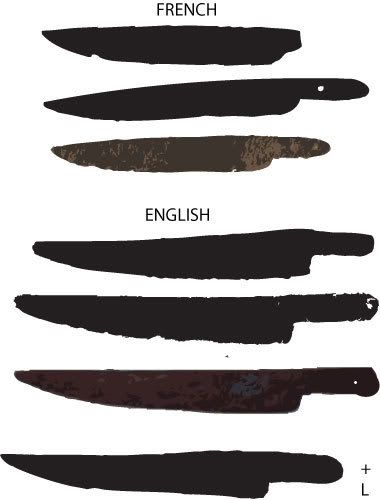
Since there is so much junk on the market, I thought maybe somebody might enjoy seeing the real deal, and a authentic reproduction.
These knives have a V cross section, not a beveled edge. They are half tang, and usually have 3 pins, of about 3/32" diameter. The early Brit knives almost always have the pins low on the tang, in a straight line. Low on the tang, but centered on the handle, so the handles were wider than the tang, on the lower edge.
French knives seem to always show the width of the stock used, in the middle of the blade.
Early Brit knives (1760-1800) are usually shaped like a bent wedge. You can't see the width of the stock used.
The handle on the repro is based on a +L knife in the Minnesota Historical Society. The diagonal front edge matches the corrosion line on the original.






